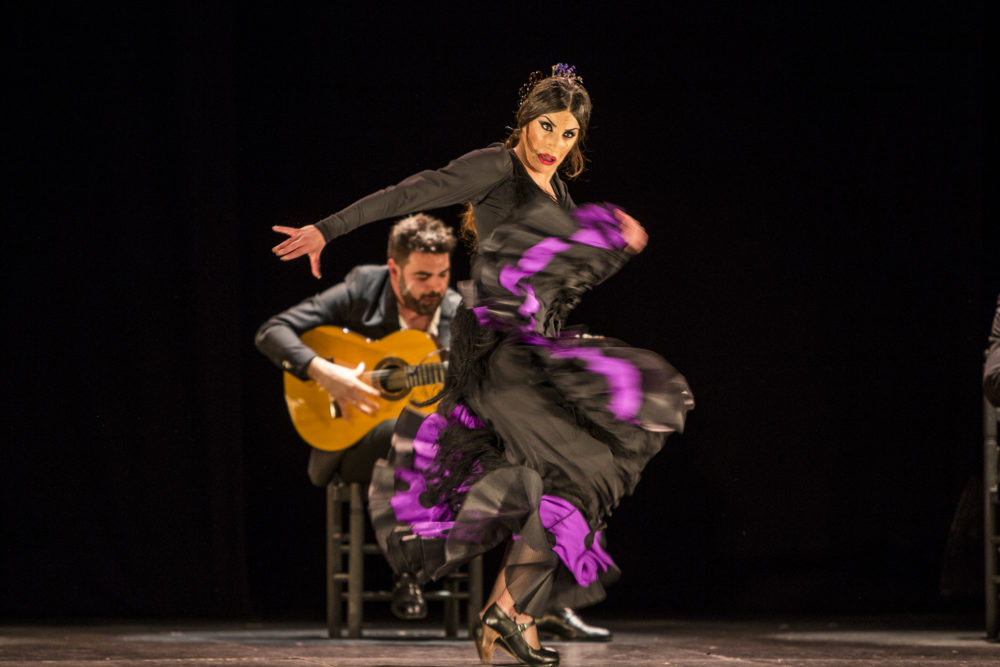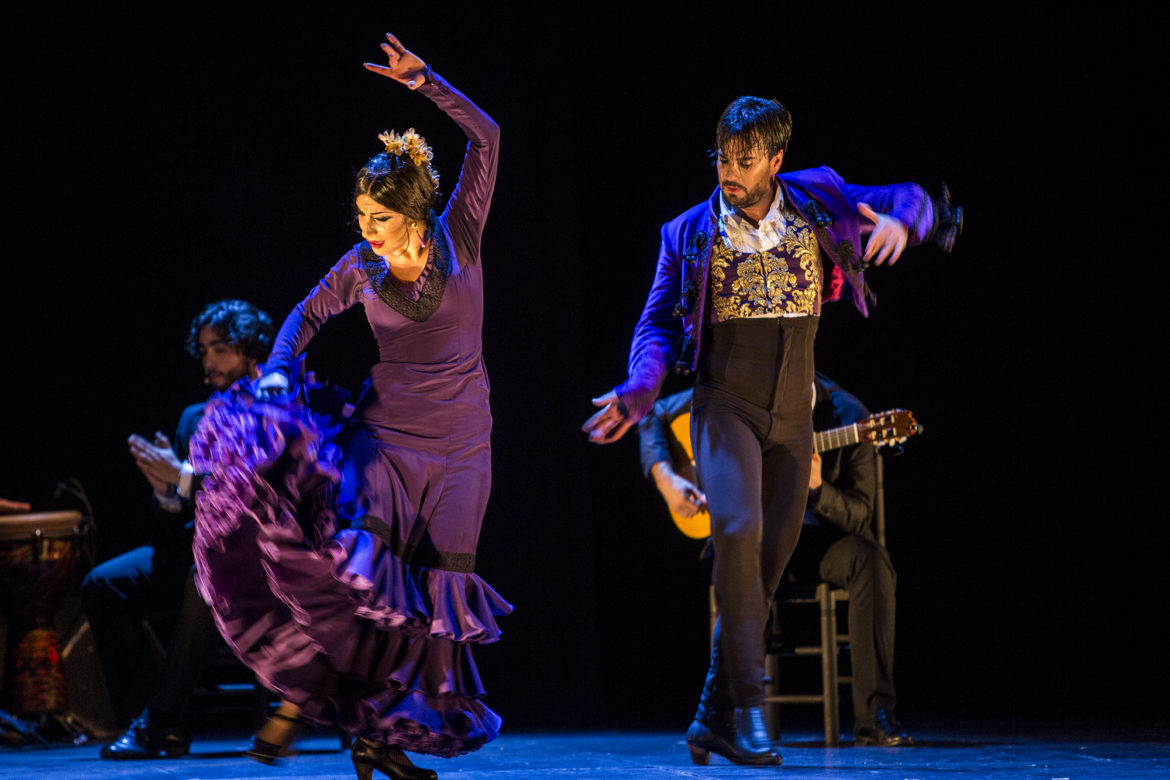The XXIII edition of the Jerez Festival – the de rigueur annual event for flamenco and Spanish dance held in Jerez de la Frontera, Spain – got off to a slow start with a lot of high concept performances and very few bright spots. It wasn’t until Monday, March 4 – 11 days into the 16-day festival – that audiences were treated to a truly spectacular night of dance.
The evening’s early show, SIMBIOSIS, by Malaga-born dancer and choreographer Adrian Santana, was part of the Baile con Ellos (Dance with Them) series, which lends a space within the festival to younger artists with promising careers. Santana has danced in the companies of some of flamenco’s most accomplished stars, including Rocío Molina and Manuel Liñán, and he’s performed at the Festival multiple times in the works of others. This was his first time participating with his own production, the second of his career.

The key to SIMBIOSIS is implicit in the title. This tremendous work of music and dance is the truest possible homage to the symbiotic relationships that make the flamenco art form possible. The music drives the dance and the dance guides and enriches the music with its rhythmic contributions. The production’s two singers, Ismael el Bola and Jesús Corbacho, take turns exposing the richness of the music’s tones and registers, and at brief moments, they come together in stunning harmony. Weaving together the music and dance is the guitar playing of Francisco Vinuesa, which is subtle, necessary and beautiful.
However, the most important symbiotic encounter within the work is that of Santana and his dance partner Águeda Saavedra. In a current flamenco climate in which the duet seems to have lost its allure, Santana resuscitates the brilliant possibilities of two bodies working in tandem and in opposition.
There is a tremendously classical line in Santana’s dance and choreographic style, which is heavily dependent on drawing gorgeous, long, flawless lines with his body, both curved and razor straight. Saavedra’s style is a little more down and dirty, as she molds her body into the heavy, almost gnarled positions that are so particular to flamenco dance.

Despite these stylistic differences, when Santana and Saavedra dance together, the result is nothing short of spectacular. They understand and complement each other, and in following that more classical approach to the flamenco expression and aesthetic, Santana exudes a smoldering masculinity and Saavedra a strong, sensual femininity.
In duets that are rife with dramatic, concentric turns, dueling footwork and a combination of graceful and forceful crisscrossing arm work, it’s the soft placement of a hand, a slow caress and an intense, longing pause that give the audience a moment take in the vibrancy of the dance and linger on the very compelling suggestiveness of the close physical proximity and restraint exhibited by the dancers.
SIMBIOSIS doesn’t need a narrative or a thematic concept to be a successful work of art. It is a stripped-down piece that relies simply on the strength of the dance and its dancers. Elegance is a core element that permeates everything from the costumes to the choreography, and Santana is its rightful ambassador.
Reviewed on 4th of March at Jerez Festival


